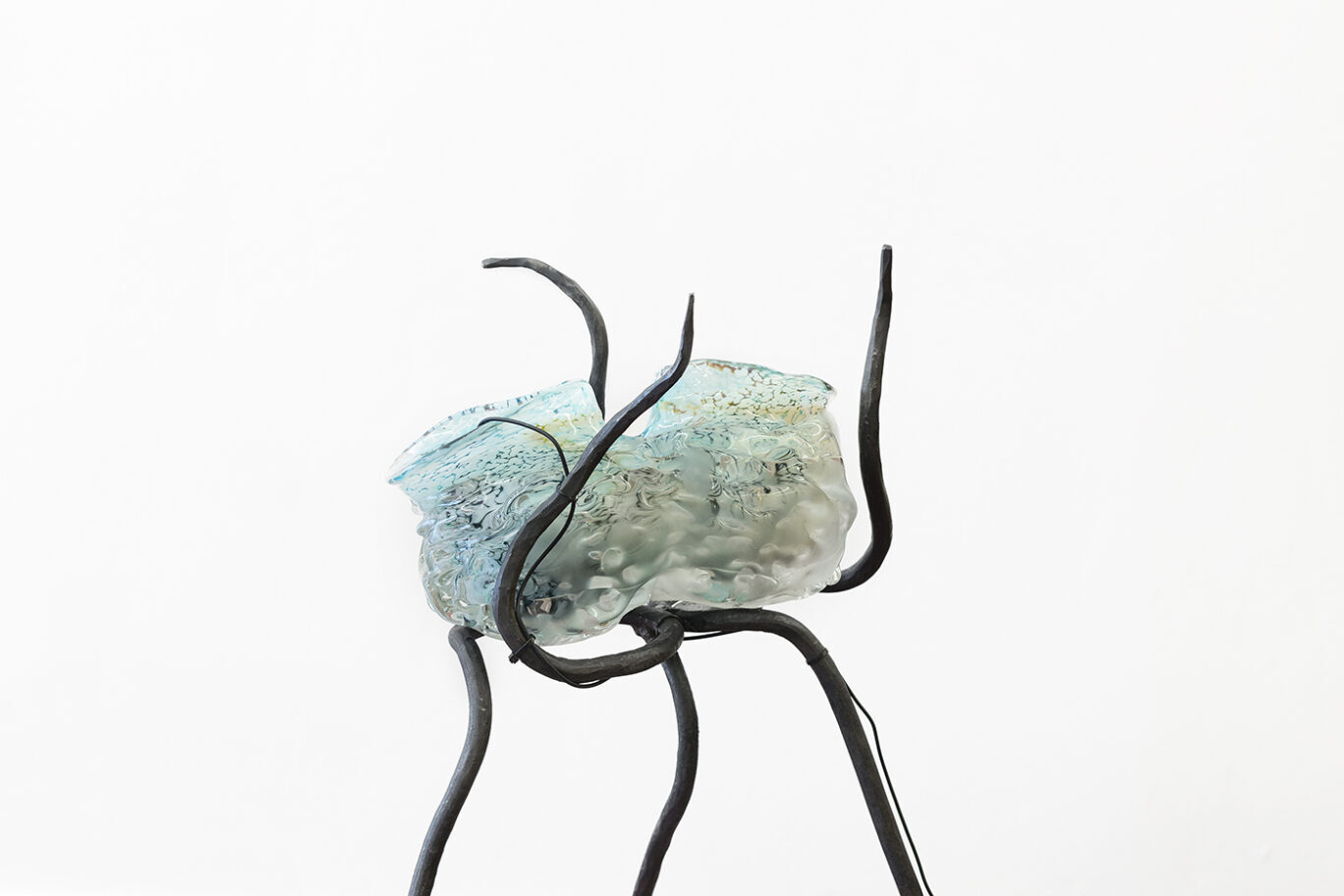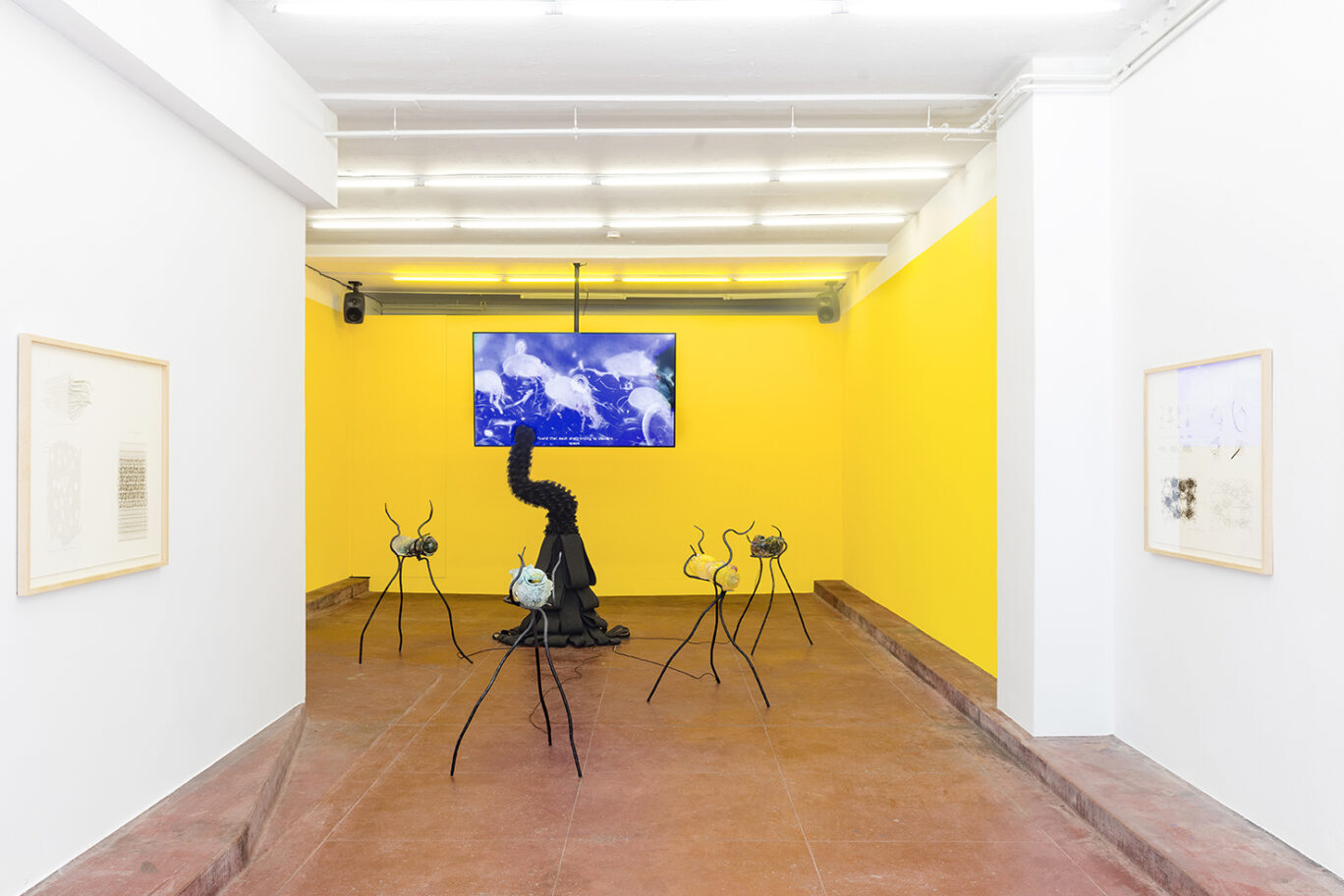GLUON presents Checkin’ Each Other Out, an artistic project by Belgian artist Jerry Galle. The show is the first exhibition in a series showcasing the results of Gluon’s residency collaboration and focuses on Galle’s most recent work, developed during a residency at Belgian research centre Flanders Make, hosted by Gluon.
Checkin’ Each Other Out is a project that questions our understanding of `intelligence’. Through interaction between humans, robots and living organisms, Galle aims to explore alternative forms of intelligence to suggest a broader spectrum of `smart’. Artificial intelligence (AI) constitutes one of these emerging intelligences. At the same time, there is also growing recognition of non-human intelligences in other living organisms such as octopuses and mycelium, which exhibit unique forms of ‘intelligence’. To encourage a shift in perspective, Galle suggests to embrace new approaches that recognise the complexity of intelligence in all its forms. According to Galle, it is crucial to consider robots and artificial intelligence not merely as subordinate entities, but as autonomous subjects. Should we emphasize fostering collaboration and promoting a sense of shared agency and mutual commitment? It is essential to ask questions that explore subjective experiences; such as “What is it like to be you?” rather than sticking to the comparative, binary question “Are you like us?”.
The installation developed by Galle provides a platform where different forms of intelligence meet and communicate. The installation consists of different elements: a cobot (a type of robot to safely collaborate with humans), micro-organisms, AI and sensory glass sculptures. The composition of the different elements evokes associations with an industrial setting, but also takes the viewer into a world that seems to have escaped from a sci-fi novel. Visitors are not only visually captivated, but are also confronted with strange sounds and textual information such as: “is it wrong to doubt?”. The inferred statements that appear on the screen are generated by an algorithm that constantly self-reflects and questions itself. This creates an engaging feedback loop between the cobot, which performs physical actions, and the AI system, which constantly examines and revises its own thought process.
This dynamic forms the heart of the installation, but to complete the work requires participation with the audience, in this case by touching the glass objects. The glass objects in this installation embody the most rudimentary, ancient methods of perceiving others and are inspired by the perceptive abilities of bacteria and aquatic organisms that can detect electric fields in their environment. Like organisms, the glass sculptures are programmed to register physical signals from visitors. Sensory systems have enabled organisms to gather detailed information, communicate, navigate complex environments and adapt to diverse ecological situations. Symbiosis, the cooperation between different organisms, has played a crucial role in the evolution of more complex life forms. In this context, the robot here symbolises the uncertain symbiosis between humans, technology and natural systems. The cobot uses a playful approach to interact with its environment. This playful approach is no exception to the artist’s practice of disrupting or ‘abusing’ his machines by introducing doubt or uncertainty into the rigid logic of the computer software. As an ongoing form of communication, the installation raises questions regarding understanding what the AI and the person are deciphering, what they continue to mutually assess and learn in exchange there.
Human-made models exist for understanding the universe and the plant world, and AI models are often used as a frame of reference to understand and model human cognition. In what ways does the introduction of AI affect our perception of our own ‘mind’? Can cultivating doubt be a valuable method for dealing with these transformative changes? Can uncertainty be seen as a way of integrating the unpredictable into our own way of thinking and relating? In contrast to the dominant profit-driven goals in interacting with technology, Galle argues for the concept of shared agency, connection and mutual engagement.
Jerry Galle (artist) sets out, in the form of paintings, drawings or texts, to poetically abuse machines. More specifically, he relates to computers and robots; he makes them do things they are not meant to do. From this playful “collaboration” between man and machine, his work emerges. Galle’s work has been shown at MHKA, Bozar, Museum Dhondt-Dhaenens, British Film Institute, Wiels, International Film Festival Rotterdam, EMAF, International Film Festival Hamburg, Museum Dr. Guislain and Ars Electronica, among others.

